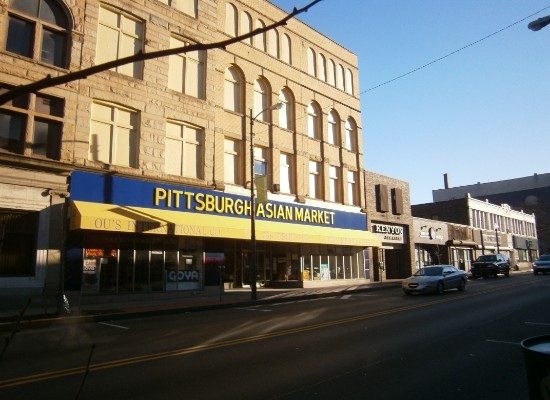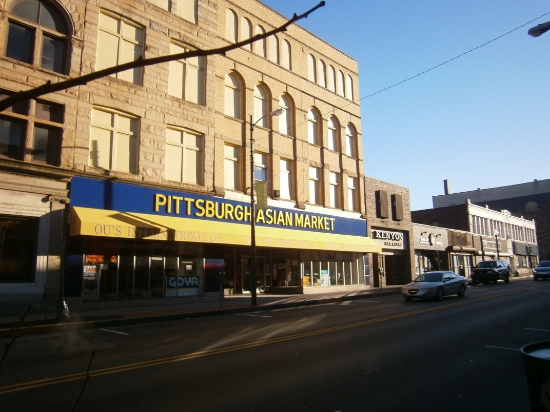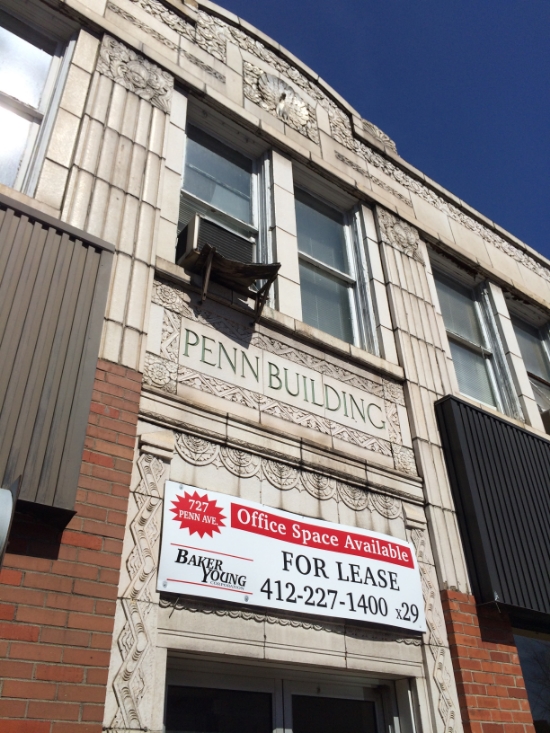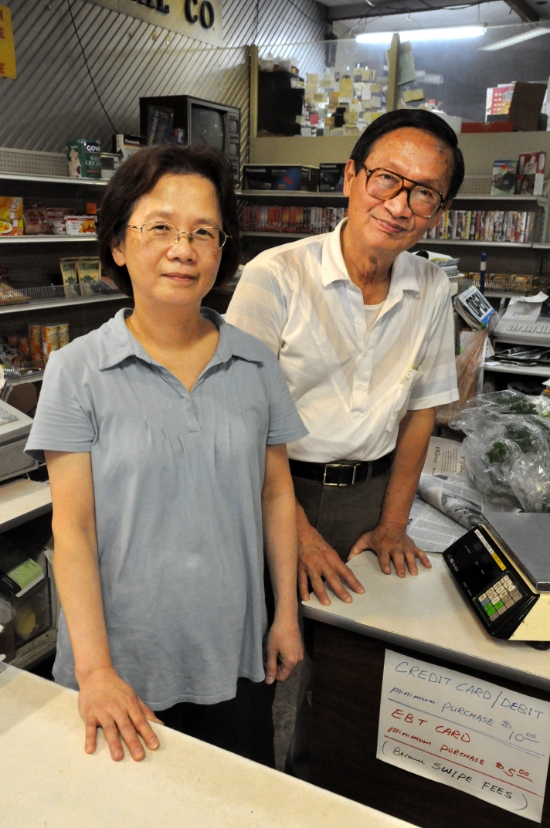In part one of this two-part series, Keystone Edge explained the role of Community Development Corporations in Pittsburgh. In part two, we'll answer the question: What can your CDC do for you?
From bustling neighborhoods like Lawrenceville and Oakland to blighted hilltop communities in desperate need of basic services, CDCs serve as advocates to secure the resources to make a community thrive. Some organizations serve broad geographic areas and dabble in coalition building, while others focus on smaller neighborhood projects. Since CDCs are not-for-profit organizations, there may be more than one in each neighborhood. Well-funded CDCs often have full-time staff members who work with board members to devise a plan of action for the neighborhood.
Physical development and community building
Established organizations like Lawrenceville United and Lawrenceville Corporation work in tandem, focusing on the people and the infrastructure of the neighborhood. According to Talia Piazza of Neighborhood Allies, an organization that funds CDCs, “This ensures that the revitalization of the neighborhood is being done according to a neighborhood plan and with input from the residents.”
Lawrenceville United focuses on the wishes of community residents, specializing in community outreach and engagement, while the Lawrenceville Corporation is a more traditional community development corporation, focusing on development projects.
In Oakland, the Oakland Planning and Development Corporation tries to create positive change by working on housing issues, workforce training, development, education, planning and volunteer coordination. Neighborhood Allies partnered with OPD to launch Pittsburgh's first-ever financial opportunity center, aimed at building individual wealth. The program seeks to improve credit scores and promote financial literacy while providing employment services.
Lifting up struggling neighborhoods
However, Oakland and Lawrenceville are thriving compared with other city neighborhoods. Hilltop Alliance serves Allentown, Arlington, Arlington Heights, Beltzhoover, Bon Air, Carrick, Knoxville, Mount Washington, Mount Oliver City, South Side Slopes, and Saint Clair, as well as Mount Oliver Borough.
Aaron Sukenik, executive director of Hilltop Alliance, says his relatively new 11-neighborhood CDC is working with residents on basic issues such as eliminating blight, improving public safety and revitalizing business districts.
“The general agreement was that we are stronger together than we are apart and that’s what brought all the neighborhoods together in 2009,” recalls Sukenik.
As an umbrella organization, its primary goal is to unite groups in the various communities to work on issues that matter to all of them.
“A lot of the issues really are the same across the neighborhoods and at this point, we’ve been making some significant progress,” says Sukenik, citing the organization’s property stabilization program.
That program provides public non-profit assistance for fixing blighted properties before code violation penalties are instituted.
“In just over a year, it has enrolled 150 properties,” explains Sukenik. “To date, there is a 31 percent resolution rate with many more resolutions still in progress.”
Like many other CDCs, Hilltop Alliance provides access to façade improvement grants, which can be used by building owners to give their properties a face-lift. CDCs often offer workshops for people looking to purchase property and provide support for community initiatives including farmers' markets.
Hilltop Alliance partnered with other community groups to give away 4,000 pounds of vegetables per month from April to November.
“All of the hilltop neighborhoods are a fresh-food desert,” explains Sukenik. “There are stores where you can buy packaged goods, but produce is hard to come by.”
Sukenik acknowledged there was still a great deal of work to be done in his organization’s service area, citing a 30 percent vacancy rate for businesses on Warrington Avenue. But he pointed to the potential in Allentown, which is poised for market-driven revitalization based upon its location and assets.
Neighborhood Allies is looking to help struggling neighborhoods in Sukenik’s service area. The organization plans to fund projects in the Hilltop, Hill District, Homewood, Larimer, Millvale and Wilkinsburg.
“These are some of the neighborhoods that have been left behind,” says Piazza. “Neighborhood Allies is looking to fund innovative solutions to old problems.”
The group has $500,000 in grants to distribute in increments ranging from $25,000 to $75,000. An informational workshop for interested applicants is scheduled for 3 – 5 p.m. September 24 at 225 Ross Street (third floor). To reserve a spot, email grants@neighborhoodallies.org by September 22.
Piazza said the workshop will give staff and applicants the opportunity to get to know each other and discuss project ideas.
Outside city limits
Businesses on Penn Avenue in Wilkinsburg are alive with activity. Tracey Evans, executive director of the Wilkinsburg Community Development Corporation, is happy that her borough will be eligible for grants from Neighborhood Allies because funding for areas outside the Pittsburgh city limits is often hard to find.
The Wilkinsburg CDC, which moved into its Penn Avenue office in 2010, is focused on revitalizing Penn Avenue and eliminating blight. The borough has seen property values rise and vacancies decrease but there’s still a long way to go.
“We still have 75 vacant storefronts on Penn Avenue and on Wood Street,” says Evans. The area faces additional challenges because it doesn't have the same large-scale resources that Pittsburgh neighborhoods have access to, such as city planning departments.
The CDC recently spilt the cost of a traffic study with the borough.
“The infrastructure of the municipality is much smaller,” explains Evans, saying that while it was sometimes easier to get things accomplished, it was often harder to afford improvements. “We are really working on a 2.2 square mile zone and we can get people to make decisions together, so that’s one positive thing.”
The CDC was able to work with the borough on an expansion ordinance, making it easier to clear back taxes for vacant buildings and provide tax abatement to people looking to purchase property in the area.
According to Evans, people sometimes don’t buy property in Wilkinsburg because property taxes are higher than they are in Pittsburgh, but since the borough has lower income tax rates than the city, the cost of living evens out.
“We offer a 10-year tax abatement program so that if you buy a vacant or abandoned property and put $100,000 of improvement into the property, you won't have to pay taxes on the full value of the property for 10 years,” explains Evans.
Evans, who has lived in Wilkinsburg since 1984, says she’s looking to improve and maintain the borough’s buildings and attract new businesses to the area. The CDC is holding a house and garden tour at on September 24 to showcase what Evans called the area’s “unique housing stock.” The event begins at the The Mifflin Avenue United Methodist Church.
Neighborhood Allies is looking to fund areas that are outside the city limits because the organization recognizes that many issues transcend neighborhood boundaries.
“Areas outside of the city share the same issues that their city neighbors do,” says Piazza. “The public safety concern in Homewood is the same issue that neighbors in Wilkinsburg are facing. We need to accept that these artificial boundaries are just that: they are artificial and one neighborhood’s success will influence the other.”
ELIZABETH DALEY is a New York City native and freelance writer who relocated to Pittsburgh in search of a better life. Her work has appeared in USA Today, The Christian Science Monitor, Reuters and numerous San Francisco Bay Area publications. Follow her on twitter @fakepretty.



